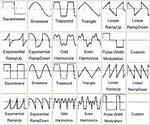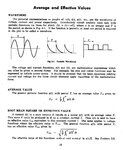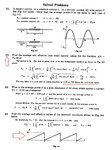stanleystan
Banned

All these different types of waveforms RMS formula is not 0.707 why is that?
Only a sine waveform and rectified AC waveform is 0.707
a square waveform RMS is 1 , the RMS value is the same as the True value measurement, why is that?
Triangle waveform, rectangle waveform, ramp waveform, etc all have different RMS formulas , it's not 0.707
Without know the RMS formula for each waveform , is it easier just to use a DVM meter to measure the AC voltage to get the RMS voltage value?
Why would a tech need to know the RMS voltage? what good it is to know the RMS of a waveform?

